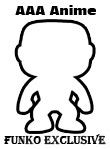Anime News
|
Review of 'The Joker' 4 Stars Out of 5 Date: 10/21/2008 |
|
The Joker DC Comics Creators: Brian Azzarello (writer), Lee Bermejo (artist) Publishing Date: November 4, 2008 Price: $19.99 ISBN: 9781401215811 Page Count: 128 pages Format: Full Color, Hardcover Age Rating: Mature Readers ICv2 Rating: 4 Stars (out of 5) The Joker should get a 5-star rating for its commercial prospects. When questioning retailers about the huge increase in sales of Batman graphic novels in the wake of The Dark Knight movie, the nearly universal response was ?Anything with the Joker sells.? Brian Azzarello and Lee Bermejo?s The Joker is the closest print approximation of The Dark Knight movie available, both in its mixture of the superhero and gangster film genres (in which the latter definitely has the upper hand) and in the character design and actions of the eponymous anti-hero, which closely approximates the look and edgy anarchism of Heath Ledger?s stunning performance in TDK. The plot of The Joker is very simple. Released from Arkham Asylum for no apparent reason (it?s what passes for a running joke in the first quarter of the book), the Joker attempts to gain control of the underworld of Gotham City by any means necessary (and by some that are apparently quite superfluous) as he confronts, vanquishes and/or intimidates ?realistic? incarnations of such staple Batman villains as The Penguin, Two-Face, Killer Croc, Harley Quinn, and The Riddler. The Joker is an original graphic novel that exists outside of the Batman continuity, so Azzarello was able to allow the Joker to dispatch some of these toned-down versions of the Caped Crusader?s antagonists. As for the Dark Knight himself--his presence is relegated to the last eight pages of the book, where he acts like a Deus ex machina to ?rid? Gotham of the grinning menace. Azzarello narrates this picaresque crime saga in the first person using Jonny Frost, a fawning (and often frightened) follower of the Joker. Frost?s naivet? shines through in the best Ring Lardner tradition as he progresses from uncertain wannabe to exultant henchman to whipped dog. The portrait of the Joker that emerges during the saga owes much to the self-loathing, anarchic protagonists of the noir novels of Jim Thompson shorn of a few layers of psychological complexity. The grotesqueness of the Joker?s sutured features is mirrored by the over-the-top nature of his vile acts of cruelty. Like Heath Ledger?s Joker in TDK, Azzarello?s anti-hero has little interest in money or even in any sort of continuing power, which strips The Joker of the kind of ?goals? that animated the great gangster films of the past like Howard Hawk?s Scarface or realistic modern examples of the genre such as Goodfellas or The Departed. In a further melding of genres, The Joker gives us the gangster as serial murderer, as spree killer. It doesn?t make a lot of sense psychologically except as a sort of operatic expansion of the twisted claustrophobic worlds of Jim Thompson?s soul-scarred protagonists, and yet it sort of works because of the Batman/Joker mythos and because of Lee Bermejo?s art, which captures the quicksilver spirit of the Joker in a variety of dynamic and strutting poses that mirror Ledger?s kinetic performance in TDK (minus the tics, which are hard to do in comics) and recalls the quasi-balletic grace of Malcolm McDowell in Kubrick?s A Clockwork Orange. In spite of its gritty lowlife settings The Joker doesn?t contain very much in the way of bad language or nudity (no nipples in the strip club scenes for example)--and, as far as these elements are concerned, it probably rates a ?PG-13? like The Dark Knight. In terms of the violence however, The Joker progresses far beyond TDK. Numerous examples of characters being shot in the head (both before and after), some really sick and gratuitous violence, plus some positively medieval touches the Joker flays one gangster alive leaving skin on just his head and one hand), combined with a body count just short of the Battle of the Somme's make The Joker inappropriate for immature readers, no matter what their chronological age. |
| Source: ICv2 |






















